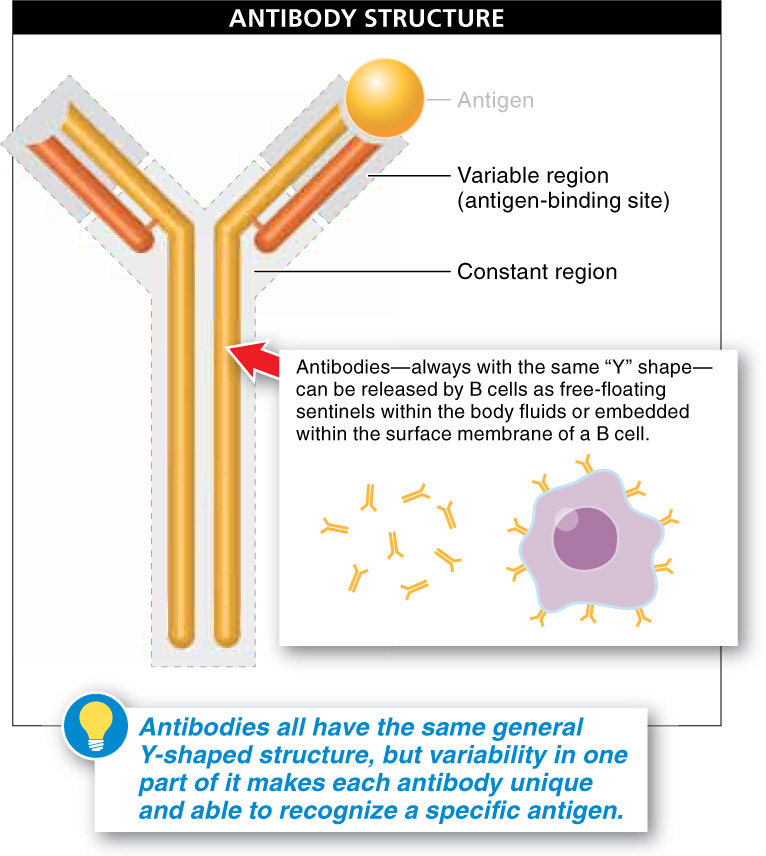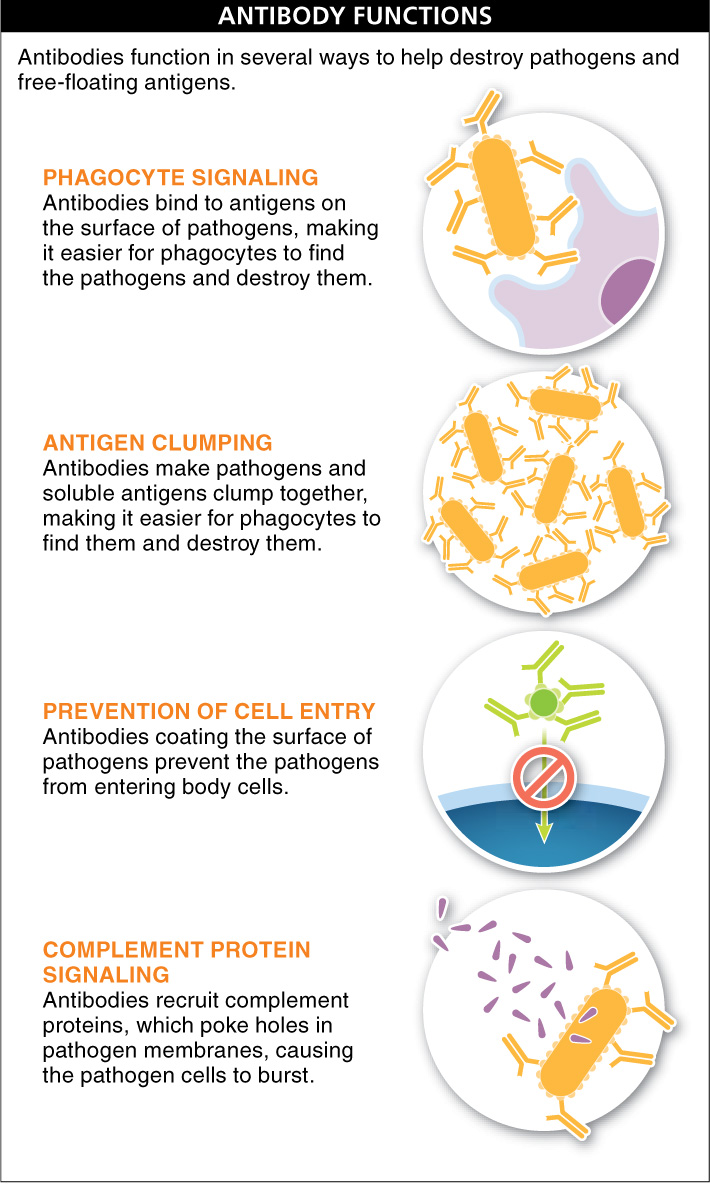

We now examine the structure and function of antibodies to learn exactly how they protect us against pathogens. All antibodies are Y-
Each antibody consists of four polypeptide chains joined together: two long (also called heavy) chains and two short (or light) chains (FIGURE 26-20). The top of the “Y” is the region that varies from antibody to antibody. But there are only about five variants for the lower part, the base of the “Y,” and so this is referred to as the constant region of an antibody. At the top of the “Y,” the variable region, each antibody has a unique three-
Any foreign cells introduced into the body will elicit an immune response, even if the cells are part of a life-
The immune system is also the reason that people in need of blood transfusions must have a proper match of blood type. As we saw in Section 7-
1061
Now let’s consider the main ways in which antibodies function (FIGURE 26-21). The immune system pumps out tons of antibodies following exposure to a pathogen, and these antibodies attach to antigens. When the antigens on the surface of a pathogen have an antibody attached to them, the pathogen is easily ingested by phagocytes (such as macrophages and neutrophils) of the non-
Besides “marking” for destruction the antigens on a pathogen, or marking free-
Lastly, when antibodies are bound to antigens on the surface of a pathogen, they recruit another player of the non-
TAKE-HOME MESSAGE 26.6
Each antibody has a unique structure that recognizes a specific antigen. Antibodies are effective in helping to destroy pathogens and free-
Describe how antibodies help to destroy pathogens.
Antibodies fight pathogens in several different ways. They can bind to antigens on the surface of pathogens, making it easier for phagocytes to find and destroy these pathogens. Because antibodies have two identical binding sites (and each antibody can simultaneously bind to two pathogens), they can clump the pathogens together and make it easier for phagocytes to find and destroy them. Antibodies also can coat the surface of pathogens, blocking their entry into body cells, thereby slowing the spread of the infections. Finally, antibodies can recruit complement proteins, which can destroy the pathogen by damaging its cell membrane.